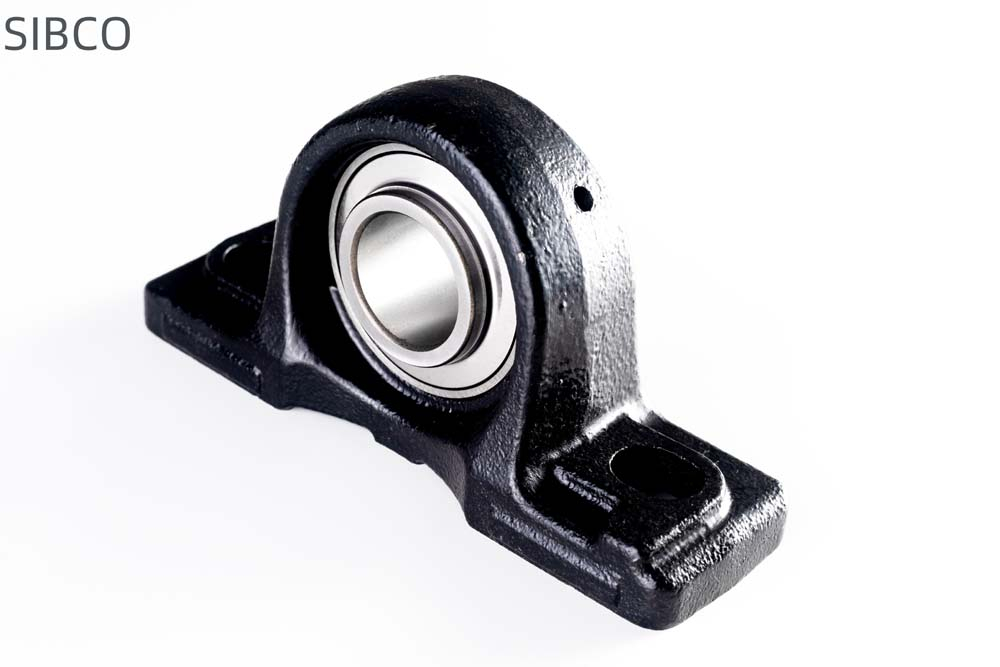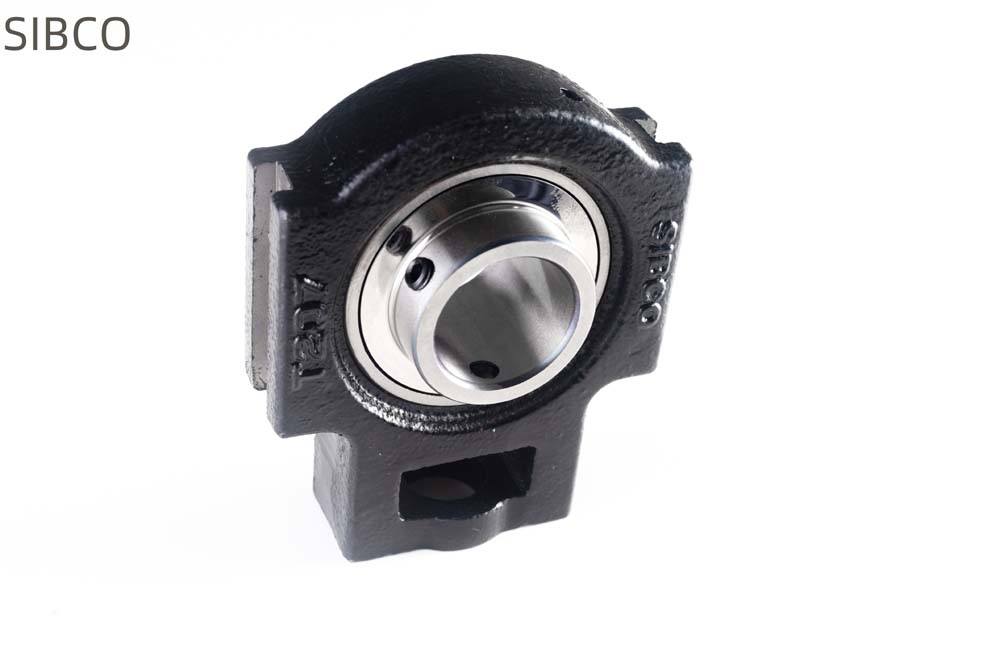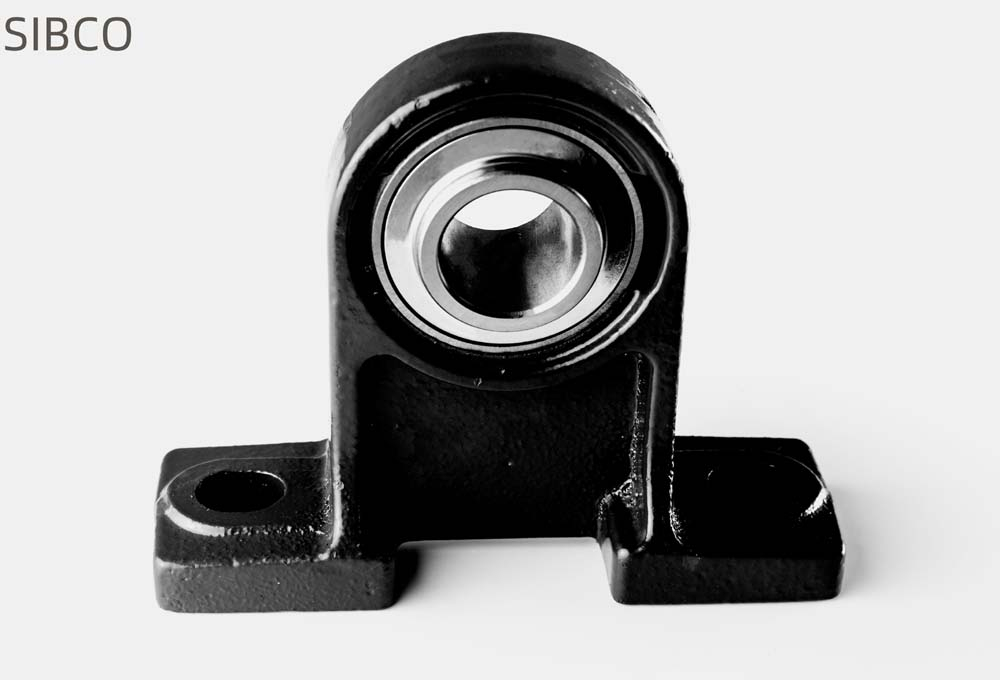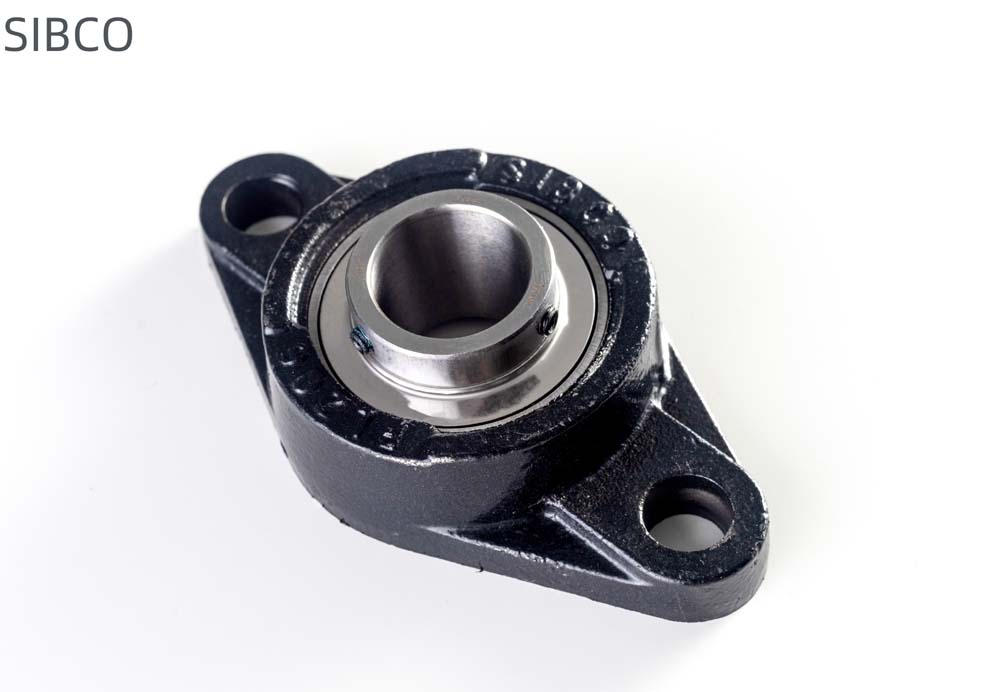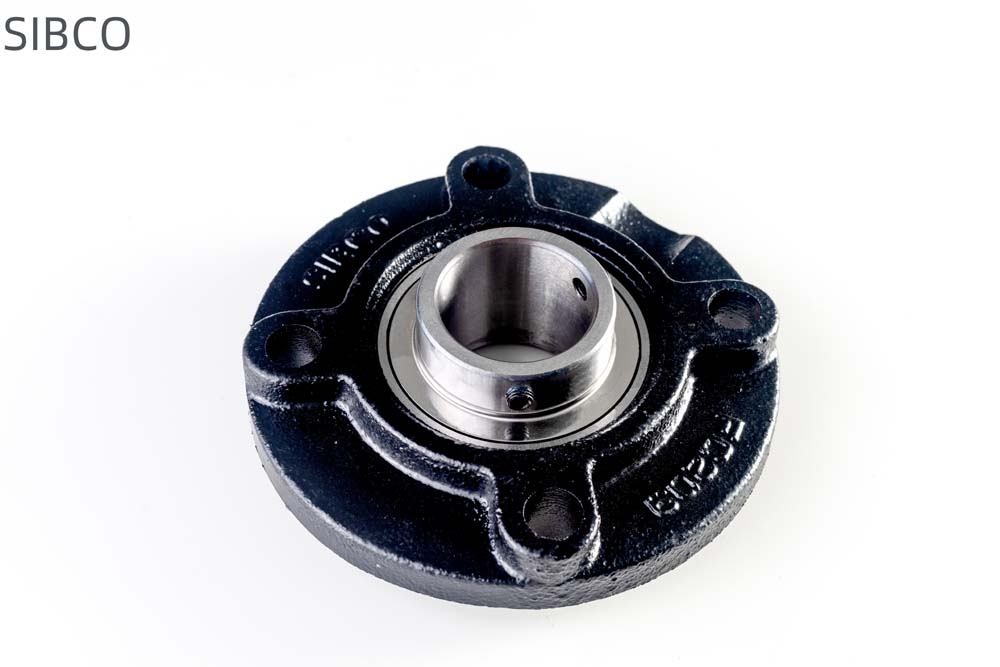A Comprehensive Guide to Bearing Knowledge: From Fundamentals to Applications, One Article Makes You a Bearing Expert
Release time:2025-05-19 hits:0次
Bearings play a crucial role in mechanical transmission. They not only support the rotating body of the machine, but also effectively reduce the friction coefficient during equipment transmission, ensuring that the center position of the shaft is fixed. This type of component, known as "Bearing" in the West and "Shaft Bearing" in Japan, demonstrates its indispensable position in contemporary mechanical equipment. According to the friction characteristics of moving components, bearings can be further divided into two categories: rolling bearings and sliding bearings.
1、 History and Development
China is one of the important birthplaces of rolling bearings. In ancient books, the structure of axle bearings has been recorded, proving China's profound foundation in bearing technology. In fact, cultural relics unearthed from Xuejiaya Village, Yongji County, Shanxi Province, show that the oldest modern rolling bearing structure prototype in China appeared during the Qin Dynasty from 221 BC to 207 BC.
Since the establishment of the People's Republic of China, especially since the reform and opening up in the 1970s, China's bearing industry has ushered in a new chapter of rapid development. At the same time, the development of global bearing technology is also advancing rapidly. In the late 17th century, C. Valor of England designed ball bearings and attempted to install them on mail carts, while P. Worth of England also obtained a patent for ball bearings. At the end of the 18th century, H.R. Hertz from Germany published a classic paper on contact stress in ball bearings, laying an important foundation for the development of bearing technology. On this basis, R. Stribeck from Germany and A. Pamgren from Sweden have made outstanding contributions to the design theory and fatigue life calculation of rolling bearings through extensive experiments. In addition, N.P. Petrov from Russia applied Newton's law of viscosity to calculate bearing friction, while O. Reynolds from the UK conducted in-depth mathematical analysis of Thor's discovery and derived the Reynolds equation, thus laying the foundation for fluid dynamic pressure lubrication theory.
Looking back at history, China's bearing industry has achieved remarkable achievements in the fifty years since the founding of the People's Republic of China, fully demonstrating its competitiveness and influence in the international arena.
2、 Application and Impact
Rolling bearings play a crucial role in modern machinery. They are widely used in various devices, including automobiles, machine tools, motors, etc., playing a role in supporting rotating or sliding axes. The excellent performance of rolling bearings makes the operation of mechanical equipment smoother and more efficient, thereby improving production efficiency and product quality. At the same time, there are various types of rolling bearings that can meet different application needs, providing strong support for the diversified development of mechanical equipment. Therefore, rolling bearings play an indispensable role in promoting the development of modern machinery industry.
Its core function is to support, that is, to bear the shaft, but this function is not limited to this. In essence, support means being able to bear radial loads, fixing the shaft so that it can only rotate, while controlling its axial and radial movements. If the motor lacks bearings, it will not work properly because the shaft may move in any direction, and the motor requires the shaft to only rotate during operation. From a theoretical perspective, bearings cannot achieve transmission function, but they will affect the transmission effect. Therefore, good lubrication must be achieved on the bearings of high-speed shafts to reduce this impact. Some bearings already have lubrication themselves, known as pre lubricated bearings, while most bearings require the use of lubricating oil. During high-speed operation, additional energy consumption is generated due to friction, which is more likely to cause bearing damage. Therefore, the viewpoint of converting sliding friction into rolling friction is not comprehensive, as there are still devices such as sliding bearings.

3、 Dimensional classification of rolling bearings
(1) Micro bearings with a nominal outer diameter of less than 26mm;
(2) Small bearings with a nominal outer diameter ranging from 28 to 55mm;
(3) Small and medium-sized bearings, with a nominal outer diameter size between 60 and 115mm;
(4) Medium to large-sized bearings, with a nominal outer diameter size between 120 and 190mm;
(5) Large bearings with a nominal outer diameter size between 200 and 430mm;
(6) Extra large bearings with a nominal outer diameter size exceeding 440mm up to 2000mm;
(7) Major bearings with a nominal outer diameter size exceeding 2000mm.
In addition, there are also bearings classified according to their aperture, for example, bearings with aperture less than 10mm are classified as miniature bearings.
4、 Classification of load directions that rolling bearings can withstand
Rolling bearings can be classified according to the direction of the load they can withstand, including radial bearings, thrust bearings, and radial thrust bearings. Radial bearings, also known as radial bearings, mainly bear radial loads. Thrust bearings, also known as thrust bearings, are specifically designed to withstand axial loads. Radial thrust bearings, also known as radial thrust bearings, can withstand both radial and axial loads simultaneously.
In addition, according to the frictional properties of bearing operation, rolling bearings can be divided into two categories: sliding friction bearings and rolling friction bearings. Sliding friction bearings usually have the advantages of high load-bearing capacity and stable friction, while rolling friction bearings are widely used in high-speed machinery due to their low friction coefficient and high limit speed.
In specific types of bearings, the nominal contact angle between the ball and the ring of angular contact bearings is between 0 ° and 90 °, which can withstand both radial and axial loads and is suitable for high-speed operation. Outer spherical bearings are commonly used in simple shell applications due to their simple structure and ease of installation. Linear motion bearings are particularly suitable for situations that require relative linear motion.
In addition, there are deep groove ball bearings, which have a simple structure and are easy to use and maintain, making them the most widely used type of bearing in the mechanical industry. It can not only withstand radial loads, but also demonstrate the performance of angular contact ball bearings when the radial clearance increases, and withstand larger axial loads. At the same time, its low friction coefficient, high maximum speed, and diverse size range enable it to perform well in various working conditions.
In addition, thrust ball bearings are also an important type of rolling bearing, with spherical rolling elements specifically designed to withstand axial loads.
Thrust ball bearings are separable bearings with a contact angle of 90 °, making them easy to install separately. This type of bearing can only withstand axial loads and has a lower limit speed. During high-speed operation, the steel ball may be squeezed towards the outside of the raceway due to centrifugal force, resulting in scratches. However, it is not suitable for high-speed operation scenarios. Unidirectional thrust ball bearings can withstand unidirectional axial loads, while bidirectional thrust ball bearings can withstand bidirectional axial loads. In addition, thrust ball bearings with spherical seat rings have self-aligning performance, which helps eliminate installation errors.
Thrust ball bearings are mainly suitable for bearing axial loads on machinery with low rotational speeds, such as crane hooks, vertical water pumps, vertical centrifuges, jacks, and low-speed reducers. The shaft ring, seat ring, and rolling element are all designed in a separate manner, making it easy to install and remove them separately.
The rolling elements of roller bearings are rollers. Among them, cylindrical roller bearings are a type of radial rolling bearings, with cylindrical rollers as the rolling elements. They belong to the separated type bearings and are very easy to install and disassemble. This type of bearing can be divided into multiple types such as single row, double row, and four row.
Single row cylindrical roller bearings can be divided into N type, NU type, NJ type, NF type, and NUP type according to the different retaining edges of the ring. It mainly bears radial loads, and can also withstand certain unidirectional or bidirectional axial loads according to the ring edge structure. Double row cylindrical roller bearings such as NN and NNU have compact structure, strong rigidity, and high load-bearing capacity, and are commonly used for supporting machine tool spindles. Four column cylindrical roller bearings such as FC, FCD, and FCDP types can withstand larger radial loads and are suitable for heavy machinery such as rolling mills.
In addition, tapered roller bearings are also a type of roller bearing, and their characteristics and applications will be detailed in the following paragraphs.
Tapered Roller Bearings
Conical roller bearing is a type of radial rolling bearing, with tapered rollers as the rolling elements. This type of bearing has separability, allowing the inner ring and rollers, cage components, and outer ring to be installed separately. By adjusting the contact line between the roller and the raceway, stress concentration can be effectively reduced. Conical roller bearings can withstand large radial and axial loads, but please note that they can only transmit unidirectional axial loads. Therefore, in situations where it is necessary to transmit axial loads in the opposite direction, another symmetrically installed tapered roller bearing is usually required.
Among various types of tapered roller bearings, single row tapered roller bearings are the most commonly used type. In recent years, small-sized double row tapered roller bearings have also been applied in the front wheel hubs of cars. For heavy machinery such as large cold and hot rolling mills, four row tapered roller bearings are often used.
In addition, there are different types of rolling bearings such as needle roller bearings, spherical roller bearings, thrust roller bearings, and thrust cylindrical roller bearings, each with unique characteristics and application scenarios.
spherical roller bearing
Thrust tapered roller bearings, with tapered rollers as the rolling elements, are designed as thrust rolling bearings.
Thrust needle roller bearings, characterized by the use of needle rollers as rolling elements, also belong to the category of thrust rolling bearings.
Thrust spherical roller bearings combine convex spherical or concave rollers to form self-aligning thrust rolling bearings. The raceway design of the bearing race or bearing shaft ring of this type of bearing is spherical to adapt to different motion requirements.
A bearing with a seat is a component that combines a radial bearing with a seat, usually equipped with a base plate for easy installation of screws on the supporting surface.
Joint bearings are mainly characterized by their spherical design of sliding contact surfaces, and are suitable for spherical sliding in swing, tilt, and rotational motion.
Finally, the combination bearing integrates two or more of the above-mentioned bearing structures within a set of bearings, such as the combination of needle rollers and thrust cylindrical rollers, needle rollers and thrust balls, etc., to meet complex mechanical requirements.
Needle roller and angular contact ball combination bearings, which combine the advantages of needle roller and angular contact ball, meet specific mechanical requirements.
Sliding bearings, which have no distinction between inner and outer rings and no rolling elements, are mainly made of wear-resistant materials. It is commonly used for low-speed, heavy-duty, and difficult to lubricate or maintain mechanical rotating parts.
Rolling mill bearings are designed specifically to withstand radial loads. Compared with deep groove ball bearings of the same size, its radial load capacity is stronger and its maximum speed is similar. However, it should be noted during use that the machining accuracy of the shaft and housing holes is required to be high, and the inclination of the axis should be controlled within 2 ° -4 °, otherwise it will affect the load capacity and service life of the bearing. Therefore, in host components that need to withstand axial loads, they usually need to be used in conjunction with other types of bearings.
Thrust roller bearing
Rolling bearings, as precision mechanical components that convert sliding friction into rolling friction, are widely used in various mechanical fields. It is mainly composed of four parts: outer ring, inner ring, rolling elements, and retaining frame. It has the characteristics of easy maintenance, reliable operation, excellent starting performance, and high load-bearing capacity at medium speeds. However, compared with sliding bearings, rolling bearings have larger radial dimensions and slightly insufficient vibration reduction capabilities, especially during high-speed operation, and their lifespan and sound need to be improved.
In rolling bearings, radial bearings mainly bear radial forces, and their structure includes an inner ring, an outer ring, rolling elements, and a cage. The inner ring rotates together with the shaft, while the outer ring is installed in the bearing seat hole. The raceway is carefully designed on the outer circumference of the inner ring and the inner circumference of the outer ring to ensure smooth rolling of the rolling body.
The thrust bearing is divided into two parts: the tight ring and the active ring. The tight ring is tightly connected to the shaft sleeve, while the active ring is supported on the bearing seat. The ring and rolling element are usually made of high-strength and wear-resistant rolling bearing steel. After quenching treatment, the surface hardness reaches HRC60-65, ensuring the durability of the bearing.
In addition, there are different types of imported bearings such as thrust angular contact ball bearings, deep groove ball bearings, and thrust tapered roller bearings, each with unique characteristics and advantages, such as high precision, high stiffness, low temperature rise, high speed, etc., which can meet various mechanical needs.
Due to the use of tapered roller design in the rolling elements of thrust tapered roller bearings, their structural characteristics result in the intersection of the rolling generatrix and the raceway generatrix of the washer at the same point on the axis of the bearing. This unique design enables the rolling surface to achieve pure rolling and has a maximum speed higher than that of thrust cylindrical roller bearings. In addition, thrust tapered roller bearings are designed to withstand unidirectional axial loads, with the type code 90000.
Next, we will explore the structure and performance characteristics of double row tapered roller bearings in imported bearings.
The structural types of double row tapered roller bearings are quite diverse, among which the 35000 type is the most common. This type of bearing has a pair of double raceway outer rings and two inner rings, with a spacer between the two inner rings. By adjusting the thickness of the spacer, the bearing clearance can be easily adjusted. This type of bearing can not only withstand radial loads, but also cope with bidirectional axial loads, and effectively limit the axial displacement between the shaft and the housing within the axial clearance range.
In addition, tapered roller bearings also have their unique features. Its type code is 30000 and it belongs to the separated type bearing. This type of bearing is particularly suitable for bearing combined radial and axial loads mainly consisting of radial loads. Compared to angular contact ball bearings, tapered roller bearings have better load-bearing capacity, although their ultimate speed is slightly lower. However, it is worth mentioning that tapered roller bearings can only withstand axial loads in one direction and correspondingly limit the axial displacement of the shaft or housing in that direction.
5、 Development History
The early design of linear motion bearings was to lay a row of wooden poles under a pry board, which may have originated from the construction period of the Great Pyramid of Giza, although there is a lack of conclusive evidence. Although modern linear motion bearings use different working principles, ball rollers are still used as key components.
The early forms of sliding and rolling element bearings were mainly made of wood, but with the development of technology, metal materials such as ceramics, sapphire, glass, steel, copper, and even plastics such as nylon, rubberwood, PTFE, and UHMWPE have been widely used in bearing manufacturing.
Rotating bearings play a crucial role in various situations, from heavy-duty wheel axles to precision clock components. As the simplest form of rotary bearing, shaft sleeve bearings reduce friction by sandwiching bushings between the wheel and axle. However, with the development of technology, rolling bearings have gradually replaced sleeve bearings, and their cylindrical roller design allows each rolling element to work like an independent wheel.
The rolling bearing with a cage was invented by watchmaker John Harrison in 1760 for the production of H3 chronometers, and this design was widely used thereafter. Early examples of ball bearings have been discovered in an ancient Roman ship excavated from Lake Nano in Italy, indicating that the history of ball bearing applications can be traced back to ancient times. Although Leonardo da Vinci described ball bearings around 1500, it was not until Galileo described "fixed ball" or "cage ball" ball bearings in the 17th century that their applications truly began to receive attention. However, for a long period of time afterwards, there was no breakthrough in the technology of installing bearings on machines. It was not until 1794 that Philip Vaughn of Camason obtained a patent for ball grooves, which truly opened a new chapter in modern bearing technology.
In 1883, Friedrich Fischer proposed a revolutionary idea of using specialized production machines to grind steel balls of uniform size and precise roundness. This breakthrough idea laid a solid foundation for the establishment of the independent bearing industry. Subsequently, the initial combination of "Fischer Automatische Gu ß stahlkugelfabrik" or "Fischer AktienGeselschaft" was carefully crafted into a trademark and officially registered on July 29, 1905. In 1962, the FAG trademark was modified and has been in use ever since, rising to become an indispensable symbol of the company in 1979.
At the same time, in 1895, Henry Timken ingeniously designed the first tapered roller bearing and obtained a patent three years later, thus establishing Timken Company. In 1907, Sven Wenquist of SKF Bearing Factory pioneered the modern self-aligning ball bearings.
6、 Precautions for use
Rolling bearings require extra caution during use due to their high-precision characteristics. Here are some key usage guidelines:
Keep the bearings and their surrounding environment clean to prevent impurities from entering.
Caution should be exercised during operation to avoid giving strong impacts to the bearings, in order to prevent damage such as scratches, dents, or fractures.
Use appropriate tools designed specifically for bearings to ensure proper operation.
Take rust prevention measures for bearings, especially in humid environments, and wear gloves to prevent sweat contamination.
Users should fully understand the characteristics of bearings and follow a series of operating procedures, including storage, cleaning, installation, inspection, and maintenance.
7、 Identification of the advantages and disadvantages of bearings
To distinguish the quality of bearings, one can start from the following aspects:
Check if the outer packaging is clear and concise. Legitimate brands usually have professional designers and excellent production conditions.
Carefully observe whether the steel stamp characters are clear and profound. Legitimate products use steel stamp technology with a deep concave font.
Gently grip the bearing body and rotate the outer sleeve, paying attention to any noise. Counterfeit products may contain impurities due to outdated production conditions.
Check for any cloudy oil stains on the surface of the bearing, which may affect its lubrication and lifespan.
When identifying the quality of bearings, we need to pay attention to several key details. Firstly, carefully inspect the surface of the bearing for any cloudy oil stains. Due to the gap between domestic anti rust technology and advanced foreign levels, domestic bearings may leave thick oil stains during anti rust treatment, while imported bearings have almost no oil stains to be found. In addition, particularly attentive people can even smell the unique rust proof oil smell on imported bearings.
Another method of identification is to observe whether the chamfer of the bearing is uniform. Chamfering refers to the intersection between the horizontal and vertical surfaces, and counterfeit products often have less precise treatment at these corners, forming a sharp contrast with the genuine product. By observing these details, we can more accurately distinguish the quality of bearings.
8、 Key points for storage
Bearings are coated with an appropriate amount of anti rust oil and packaged with specialized anti rust paper before leaving the factory to ensure their quality is guaranteed unopened. However, for bearings stored for a long time, it is recommended to place them in an environment with humidity below 65% and temperature maintained at around 20 ℃, and it is best to store them on a shelf about 30cm above the ground. At the same time, it should be ensured that the storage location is protected from direct sunlight and contact with cold walls.
 SIBCO Bearing
SIBCO Bearing
